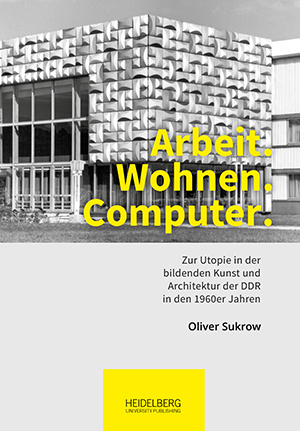
How to Cite
License

This work is licensed under a Creative Commons Attribution-ShareAlike 4.0 International License.
Identifiers
Published
Arbeit. Wohnen. Computer.
Zur Utopie in der bildenden Kunst und Architektur der DDR in den 1960er Jahren
In the 1960s, between the construction of the Berlin Wall (1961) and the change of power (Ulbricht / Honecker 1971), a field of tension between the claim to power and truth of the SED on one side and the subjective obstinacy of the works of art and their creators on the other hand developed. Within it, debates arose regarding the question of the design and appearance of a future, technologically high developed and scientific socialism. Working. Living. Computer tracks down questions about the appearance of the worker of the future, the future of living, and the significance of the computer in the future and analyses these imaginative worlds of socialist dreams and desires in image, architecture, and texts





